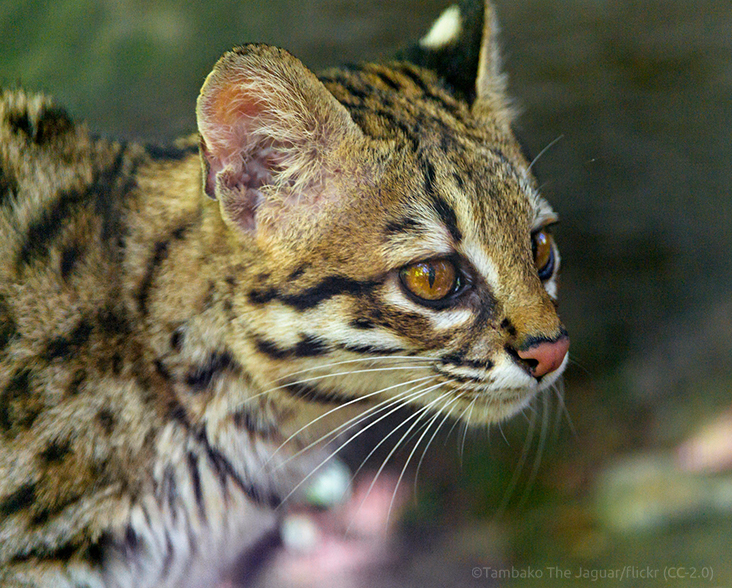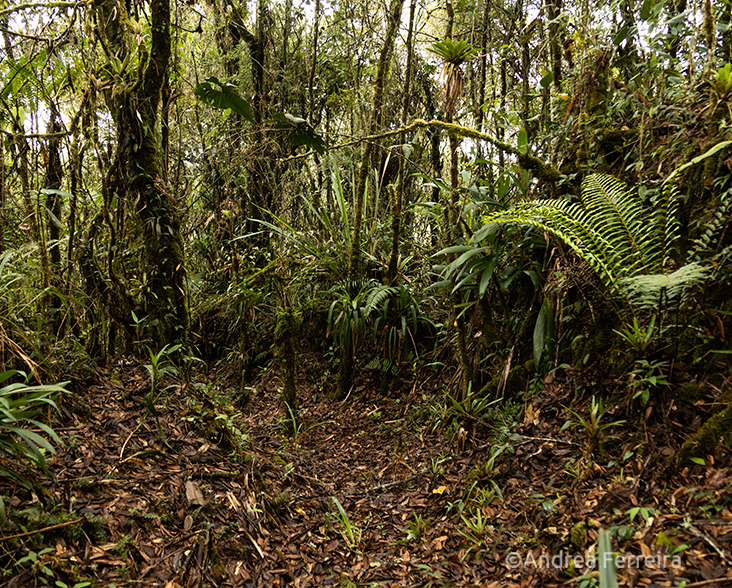Species Data
Class: Mammalia
Order: Carnivora
Family: Felidae
Scientific Name: Leopardus tigrinus
IUCN Red List status: Vulnerable
Description
Following DNA analysis, the Oncilla was split in 2013 into two species, with the nominate subspecies L. tigrinus renamed to Northern Oncilla or Northern Tiger Cat. A third species has also been proposed.
With a head-body length between 38-55.6 cm and a tail 22.5-42 cm long, the Northern Oncilla is one of South America’s smallest spotted cat species. Weighing 1.5-3.5 kg, males are heavier, with females typically reaching 2 kg. The thick fur is covered in irregular dark-brown and black-bordered rosettes or solid small dots running longitudinally along the body, merging into 7-13 dark bands on the tail that has a dark tip. The ground colour varies from rich ochre to tawny brown or grey on the upperparts, becoming paler on the flanks and whitish on the belly, which is also heavily spotted. The back of the ears are black with a white spot. Melanistic individuals also occur. The smaller size, shorter muzzle, slim build, neck hair slanting backward, and relatively short tail equal to or slightly longer than the hind legs help tell this species apart from the similar Margay.
Behaviour
A rarely seen species, the Northern Oncilla is mostly nocturnal and largely solitary but sometimes seen in pairs during the breeding season. Although good climbers, they hunt on the ground, stalking rodents, shrews, opossums, birds, reptiles, and tree frogs, as well as taking insects. Males have a territory between 4.8 to 17 km2 with females ranging over a smaller area of 0.9 to 2.3 km2.
Little is known about the reproduction of this species in the wild, but in captivity females reach sexual maturity after two years and males after 18 months. Estrus lasts 3-9 days, gestation is 62-76 days, and litter size is typically just one kitten but can be up to three. Kittens open their eyes between 8-17 days, and their teeth emerge after 21 days. Kitten are weaned at around three months and fully grown at 11 months old. In the wild the Northern Oncilla can live for 10-14 years.


Habitat
The distribution of Northern Oncilla is poorly understood, especially in the south of its range, but this species is known to occur from Costa Rica and Panama in Central America (subspecies L. t. oncilla) southwards to north-eastern and central Brazil and in the Andes from Colombia to Bolivia.
This species inhabits a wide variety of forest habitats, including lowland tropical Amazonian rainforest, dry Caatinga forest and Cerrado in Brazil, and high elevation montane and cloud forests in the Andes, and up to 3,625 m in Costa Rica. In Colombia, they occur only above 1,500 m, with an exceptional record at 4,800 m. They have also been recorded from secondary forest and abandoned eucalyptus plantations.
Threats and Conservation
The rarest species of Neotropical cat, the Northern Oncilla, is poorly known and rare to uncommon throughout most of its range, with generally low population densities.
The biggest threat to this species is habitat loss, fragmentation and isolation. Deforestation in the Andes is mainly due to agriculture, cattle ranching and logging, with oil extraction, hydroelectric dams, urban sprawl and road building also contributing. Populations are becoming increasingly reduced and fragmented. Therefore, the Northern Oncilla is classified as Vulnerable on the IUCN’s Red List.
Hunting for their pelts and for the pet trade in the 1970s and 80s significantly reduced the population. Although this species is now protected under Appendix I by CITES, poaching remains a threat, as does retaliatory killing by poultry farmers.
WLT is supporting a project by partner Fundación Guanacas Bosques de Niebla to expand the Guanacas Reserve and safeguard the montane forest habitat of the Northern Oncilla.
